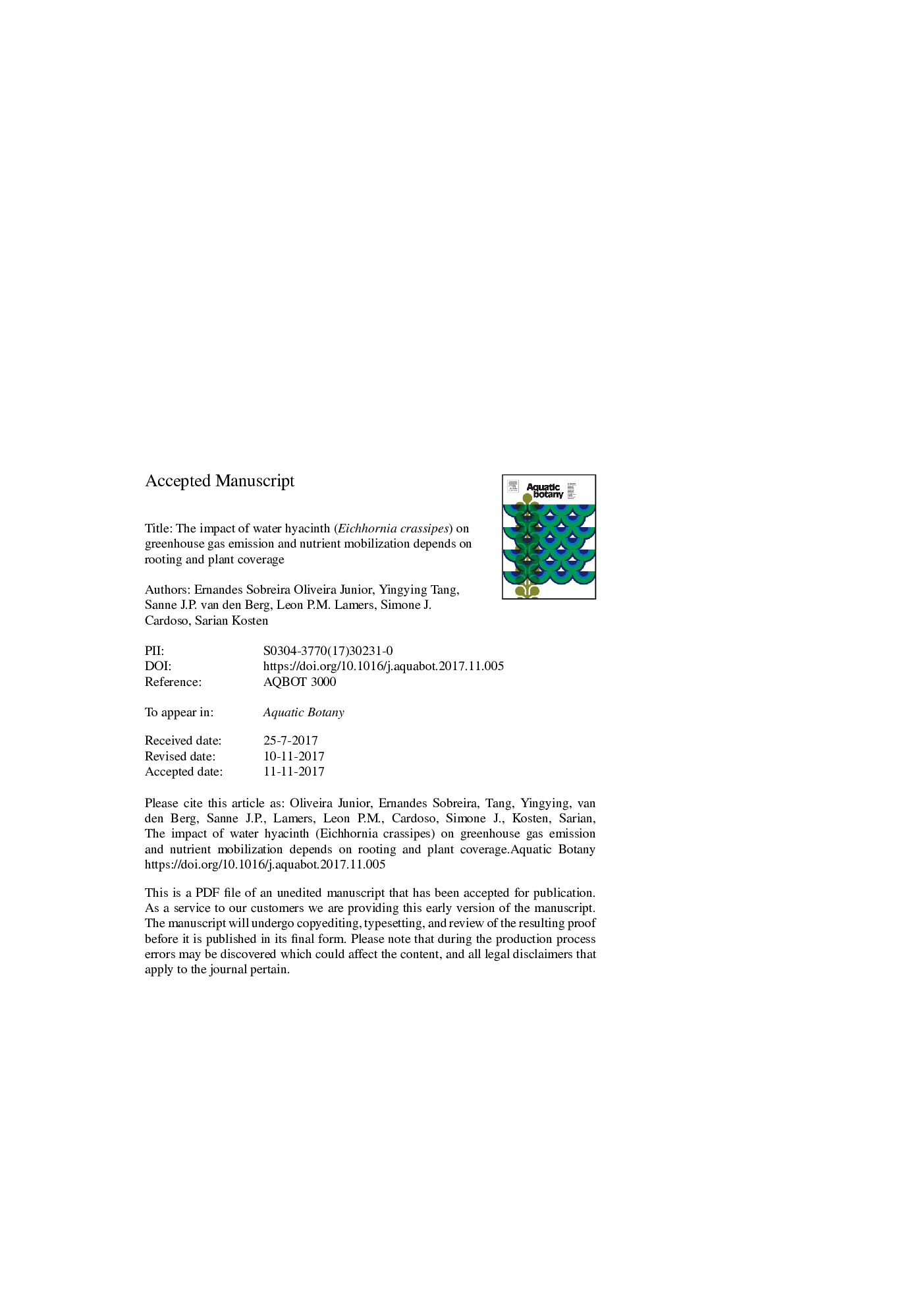| کد مقاله | کد نشریه | سال انتشار | مقاله انگلیسی | نسخه تمام متن |
|---|---|---|---|---|
| 8883593 | 1625797 | 2018 | 33 صفحه PDF | دانلود رایگان |
عنوان انگلیسی مقاله ISI
The impact of water hyacinth (Eichhornia crassipes) on greenhouse gas emission and nutrient mobilization depends on rooting and plant coverage
دانلود مقاله + سفارش ترجمه
دانلود مقاله ISI انگلیسی
رایگان برای ایرانیان
کلمات کلیدی
موضوعات مرتبط
علوم زیستی و بیوفناوری
علوم کشاورزی و بیولوژیک
علوم آبزیان
پیش نمایش صفحه اول مقاله

چکیده انگلیسی
Water hyacinth stands are known to affect both nutrient concentrations in the water and carbon exchange with the atmosphere. However, both enhanced and reduced greenhouse gas (GHG) emissions have been reported in relation to water hyacinth presence. This controversy may be explained by variation in plant density and rooting. High growth rates indicate its capacity to mobilize and store nutrients in the tissues, and assimilate large amounts of carbon dioxide (CO2). Simultaneously the plant can stimulate methane (CH4) emission. This may occur when plants are rooting in the sediment due to CH4 shuttling from the sediment, through the plant, into the atmosphere. To unravel the potential influences of water hyacinth on nutrient dynamics and GHG fluxes, we performed an experiment in which plant coverage and root access to the sediment were manipulated. Plants reduced phosphorus concentrations in water and pore-water, independent of coverage and rooting, also rooting plants grown at high coverage showed higher plant N:P ratios. CH4 emissions were highest at high coverage and were further increased by rooting, indicating that plant-mediated transport indeed takes place. However, the overall GHG budget in terms of CO2 equivalents still resulted in the water hyacinth vegetation being near neutral, or even a net sink with respect to GHG exchange. The plant-induced enhancement of CH4 emissions suggests that the plant can be an effective CO2-to-biomass-to-CH4 converter. Our results show that plant coverage and water depth - regulating sediment-root contact - should be taken into account when estimating water hyacinth's effect on GHG emissions.
ناشر
Database: Elsevier - ScienceDirect (ساینس دایرکت)
Journal: Aquatic Botany - Volume 145, February 2018, Pages 1-9
Journal: Aquatic Botany - Volume 145, February 2018, Pages 1-9
نویسندگان
Ernandes Sobreira Oliveira-Junior, Yingying Tang, Sanne J.P. van den Berg, Simone J. Cardoso, Leon P.M. Lamers, Sarian Kosten,